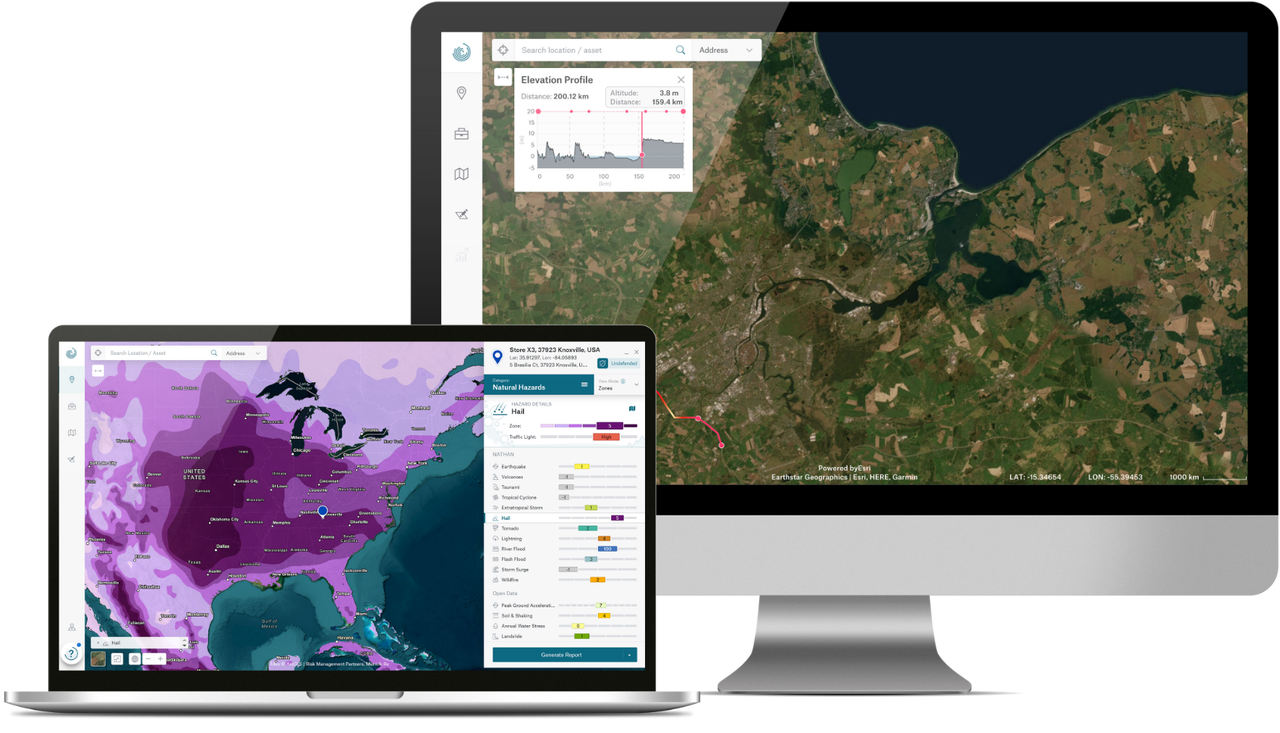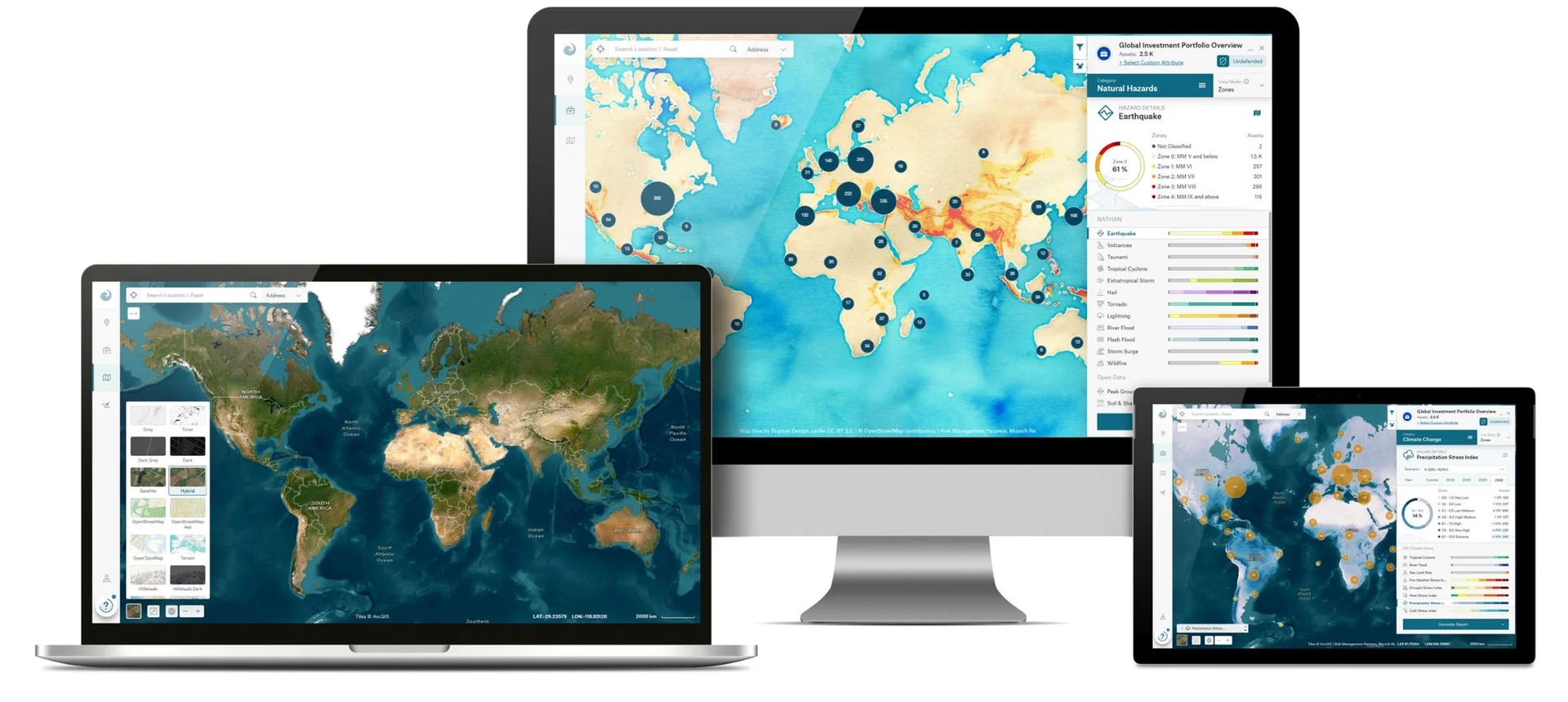
Banking has never been free of risk. But climate risks are a whole new challenge
But these risks can also be a great opportunity if you can assess and manage them reliably, and thus stay a decisive step ahead.
properties.trackTitle
properties.trackSubtitle
The frequency and intensity of natural disasters are having an increasing impact on your clients and their assets. This increases the risk that due to such impacts, borrowers will be able to fulfil their obligations either not at all, or not to a sufficient extent. For you as a bank, this is a growing risk that can lead to serious losses.
And of course this not only applies to the loans you grant, but also to your own investments, your reporting and your results in climate risk stress tests. The ECB's recent report1 on the results of the climate risk stress test also highlights the need for banks to do more to address the risks of climate change. Despite some progress, according to the ECB banks are still far from meeting regulatory expectations. And how have you and your bank performed in the climate risk stress tests so far?
1 Source: European Central Bank, 2022 climate risk stress testThe entire banking industry is struggling with the impacts of climate change. In 2023 a new one-year record was set with 45 catastrophic events, each causing damage of at least US$1 billion or significantly more.2
2 Source: Munich Re NatCatSERVICE, Status, January, 2024
Turn your 4 key tasks into 4 key success factors
When assessing private or commercial loans, your focus to date has primarily been on the creditworthiness of applicants, to ensure that they can actually repay the loan. The assessment of the value of the asset to be financed itself, often real estate, is now playing an increasingly important role, especially in times of climate change and over the entire term of the contract.
Natural disasters are not only occurring more frequently, but are also causing significantly greater damage, creating an additional risk for you as a lender. An informed assessment of this risk, preferably based on reliable data that extends far into the future, is increasingly becoming a decisive success factor for your business.
Location Risk Intelligence offers you precisely this possibility with its analysis and evaluation tools. It enables you to identify climate risks for individual physical locations and entire portfolios, classified and weighted according to a wide range of hazard scores, so you can conduct your credit checks with the highest level of confidence.
With Location Risk Intelligence you can accurately assess the financial risks associated with climate change for your company on the basis of highly up-to-date, reliable data. You can then at all times fulfil the growing demands on your reporting with regard to greater transparency, as well as the mandatory additional provisions relating to climate reporting, e.g. EBA Pillar 3 reporting (IFRS S2).
Instead of vague estimates, you can meet the increasing pressure from various stakeholders such as investors and regulators with facts which fully and accurately disclose your company's exposure to climate change risks.
And with Location Risk Intelligence, you are already well prepared for the future when climate stress tests become mandatory.
As a bank you need to assess not only your customers' assets in terms of their exposure to climate risks, but also your own investment portfolio.
Particularly in large portfolios with thousands of assets, it takes a great deal of meticulous effort to identify the particularly risky ones. And due to climate change, risks that were previously categorised as safe can often change within very short periods of time.
However, using the latest risk models and software tools, such as Location Risk Intelligence editions, risks can now be identified much earlier. Qualitative and quantitative predictions can then be made of the risk exposure of individual assets or entire portfolios of up to five million locations. As a result, you can align your appetite for risk with your exposures and significantly improve your resilience to climate risks.
Why not use Location Risk Intelligence proactively right now to advise your clients on their risk exposure? As with the evaluation of new assets, you can use Location Risk Intelligence's predictive models to evaluate your clients' existing portfolios, regardless of whether or not the assets were financed through your bank.
Quickly and easily identify high-risk assets for your clients, including the potential financial impact of climate risks, and benefit from portfolio optimisation with the accompanying financing offers, for example.
Better decisions, better business!
Book your demo right now.
Thanks to the detailed and meaningful assessment of physical risks from natural disasters and climate change using the Climate Change Edition, we can make an informed credit decision in our risk analysis.


How Location Risk Intelligence Platform and its editions support you in your day-to-day business
Munich Re's Location Risk Intelligence is a modular SaaS solution that enables you to understand, measure and manage the risks posed by natural hazards and climate change - worldwide.
The following editions are particularly relevant to your day-to-day business needs, enabling you to generate up-to-date climate-related data for individual locations or entire portfolios, and to document the associated exposure to these risks based on scientific evidence.
Location Risk Intelligence Platform
The platform supports you in particular in incorporating climate-related effects in your credit decisions, so that you can provide your customers with attractive offers that take natural disasters as well as climate change and its consequences into account.
By entering individual locations or uploading entire portfolios into Location Risk Intelligence Platform, you can easily analyse, visualise, compare and document natural disasters and climate risks in the form of meaningful reports. The modular platform not only enables you to identify your current and future climate risks, but also to take the financial impacts of climate change into account.
Climate Change Edition
This edition will help you not only to understand the exposure of specific assets to current physical risks, but more importantly to analyse and assess the physical risks associated with climate change in a wide range of future scenarios.
By taking both acute and chronic climate risks into account, this edition provides information on nine Climate Hazard Scores. And unlike Natural Hazards Edition, the risk scores are not only calculated based on past events, but also include projected changes in the intensity and frequency of future events under different climate scenarios.